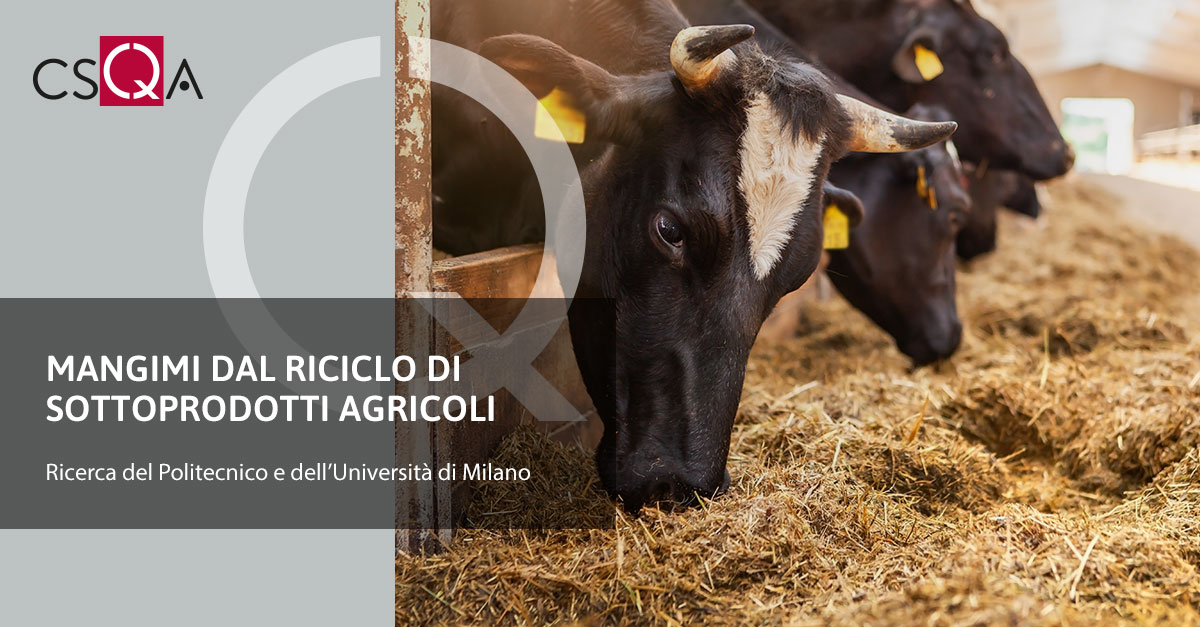 It doesn't happen often that an Italian study makes the cover of one of the most important magazines in the sector, Nature Food . It happened in December, thanks to work by the Polytechnic and the University of Milan , entirely dedicated to possible alternative sources of animal feed from circular materials , i.e. recycling waste.
It doesn't happen often that an Italian study makes the cover of one of the most important magazines in the sector, Nature Food . It happened in December, thanks to work by the Polytechnic and the University of Milan , entirely dedicated to possible alternative sources of animal feed from circular materials , i.e. recycling waste.
If these materials were truly fully exploited, there would be great benefits not only at a local level, but also on the climate, on food security and on the food production system in general.
The assessments and estimates, made by the group called Glob3Science (from Global Studies on Sustainable Security in a Changing Environment) together with the hydrology and nutrition institutes of the Lombardy university, started from some data relating to the competition between proteins for human beings and proteins and other nutrients for farm animals .
Animal proteins
Proteins of animal origin represent 16% of global food demand . However, their production consumes much more than 16%, but a third of agricultural resources , and is responsible for three quarters of land consumption, because to feed the animals almost only feed obtained specifically from ad hoc cultivated land is used.
And this means deforestation , loss of biodiversity , emissions , consumption of water and soil . And competition, because those same vegetables could be directly destined for human nutrition.
To get out of this loss-making system , there is a solution available to all agricultural supply chains: the reuse of waste, which is almost always eliminated or destined for less noble uses.
The study by the Milanese researchers demonstrates that if materials such as cereal bran, sugar beet pulp, molasses, cassava residues, distillery residues and citrus fruit pulp were exploited at least in part, the effect would be very relevant.
In particular, if between 11 and 16% of feed with a high environmental impact were replaced with these products, all of which have high nutritional value, between 15.4 and 27.8 million hectares of land could be saved , avoiding use water for irrigation for a volume between 3 and 19.6 km3, and to exploit rainwater for a volume between 74.2 and 137.8 km3.
“Recycling the by-products of agricultural production” commented Camilla Govoni, researcher at the Polytechnic University of Milan , “means decreasing the competition between proteins intended for animals and humans , and increasing the availability of food for the latter. And having more food would mean increasing food security in many countries."
Recycle for the environment too
Marina Cristina Rulli , professor of hydrology and coordinator of Glob3Science, recalled that "Reducing the impact of crops intended for animal feed would bring advantages not only locally, but also on a large scale.
Reducing the need for food thanks to greater availability would also mean transporting less of it, with socio-economic and environmental benefits.
Furthermore, it would help alleviate excess pressure on land and water, as well as reduce deforestation and the consequent effects on emissions and biodiversity.
All this is particularly important at this time, when many countries still have to deal with the consequences of the pandemic and, above all, those of the war in Ukraine, in addition to the effects of increasingly frequent extreme climatic events".
“The approach” concluded Luciano Pinotti, professor of nutrition at the University of Milan , “must be that of intelligent animal nutrition , and research must provide solutions to obtain animal feed without worsening the environmental situation and the impact of animal protein production.
It is therefore necessary to optimize the use of nutrients along the entire food chain, and to think no longer from a competitive perspective, but from one of synergy and complementarity .
We must arrive at a One Nutrition approach , which keeps the different elements together in the name of circularity. (Source: Agnese Codignola, https://ilfattoalimentare.it /)